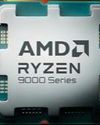Poging GOUD - Vrij
THE RACE FOR ADVANCED ENCRYPTION
Maximum PC
|November 2024
Strong encryption hasn't always been freely available to the public. Nate Drake tells the story of how the first Data Encryption Standard transformed the cryptography landscape

IN THE INTRODUCTION to his awesome treatise on the history of cryptography, The Code Book, Simon Singh likens the ongoing battle between those who seek to keep communications secret and the consequent efforts of others to expose them to an intellectual “arms race.”
It’s easy to be smug about older ciphers, such as the Caesar cipher, which simply shifts each letter in the message three places, A becoming D, B becoming E, and so on. These kinds of monoalphabetic ciphers are so easy to crack, Edgar Allan Poe even used to run a column breaking enciphered messages sent in by readers of Alexander Weekly Messenger.
The arrival of affordable computers in the ’60s didn’t initially herald a new wave of encryption. Secure cryptography was still the preserve of governments, though it was becoming increasingly obvious that individuals and businesses also needed to keep communications safe.
To this end, IBM set up a program to develop high-grade cryptosystems to protect its products.
This, in part, led to the implementation of DES (Data Encryption Standard), and in time AES (Advanced Encryption Standard), which we use to this day. These developments didn’t happen overnight, given the competing interests of citizens and shadowy organizations like the NSA. Many cryptographers also made their careers either debunking flawed schemes or introducing ciphers of their own.
This is the story of how the first publicly available encryption algorithm, DES, came to be, as well as how ultimately it was replaced by the more secure AES.
FEISTEL’S FIRST STEPS
Horst Feistel nearly missed out on having any impact on the field of cryptography. After arriving in the USA from Berlin in 1934, he applied for American citizenship only to be placed under house arrest upon the outbreak of World War II.
Dit verhaal komt uit de November 2024-editie van Maximum PC.
Abonneer u op Magzter GOLD voor toegang tot duizenden zorgvuldig samengestelde premiumverhalen en meer dan 9000 tijdschriften en kranten.
Bent u al abonnee? Aanmelden
MEER VERHALEN VAN Maximum PC

Maximum PC
Velocity Micro Raptor ES40
A compact PC that mixes it with the big boys
3 mins
February 2025

Maximum PC
Intel Arc B580
Intel's second crack at the gaming GPU market
3 mins
February 2025

Maximum PC
Indiana Jones and the Great Circle
Dr Jones will steal your heart in MachineGames' best effort to date
2 mins
February 2025

Maximum PC
Improve your memory with Windows Recall
SINCE ITS ANNOUNCEMENT at Microsoft's Build conference in May 2024, Recall has had a torrid time.
11 mins
February 2025

Maximum PC
HAVE WE REACHED MAXIMUM PC?
Has the desktop reached the point where it can get no better? Ian Evenden looks ahead
17 mins
February 2025

Maximum PC
THE EVOLUTION OF VIDEO GAME AI
Over time, game AI has become more refined.
15 mins
February 2025

Maximum PC
X (formerly Twitter) vs Bluesky
The battle of the micro-bloggers
4 mins
February 2025

Maximum PC
Fun and graphics card games at CES 2025
WE ALL KNEW what was coming at CES: a bunch of graphics cards from AMD and Nvidia. They were pretty much exactly as predicted, albeit with some surprises. AMD managed to botch the launch of its RDNA 4 cards, while Nvidia played 3D chess with the pricing of its new RTX 50 cards.
2 mins
February 2025

Maximum PC
AMD UNVEILS NEW GAMING AND AI CHIPS
AMD Ryzen AI Max series announced at CES 2025
1 mins
February 2025

Maximum PC
DOCTOR
Save CCTV system | Multiple audio devices | Encrypted download
6 mins
February 2025
Listen
Translate
Change font size
